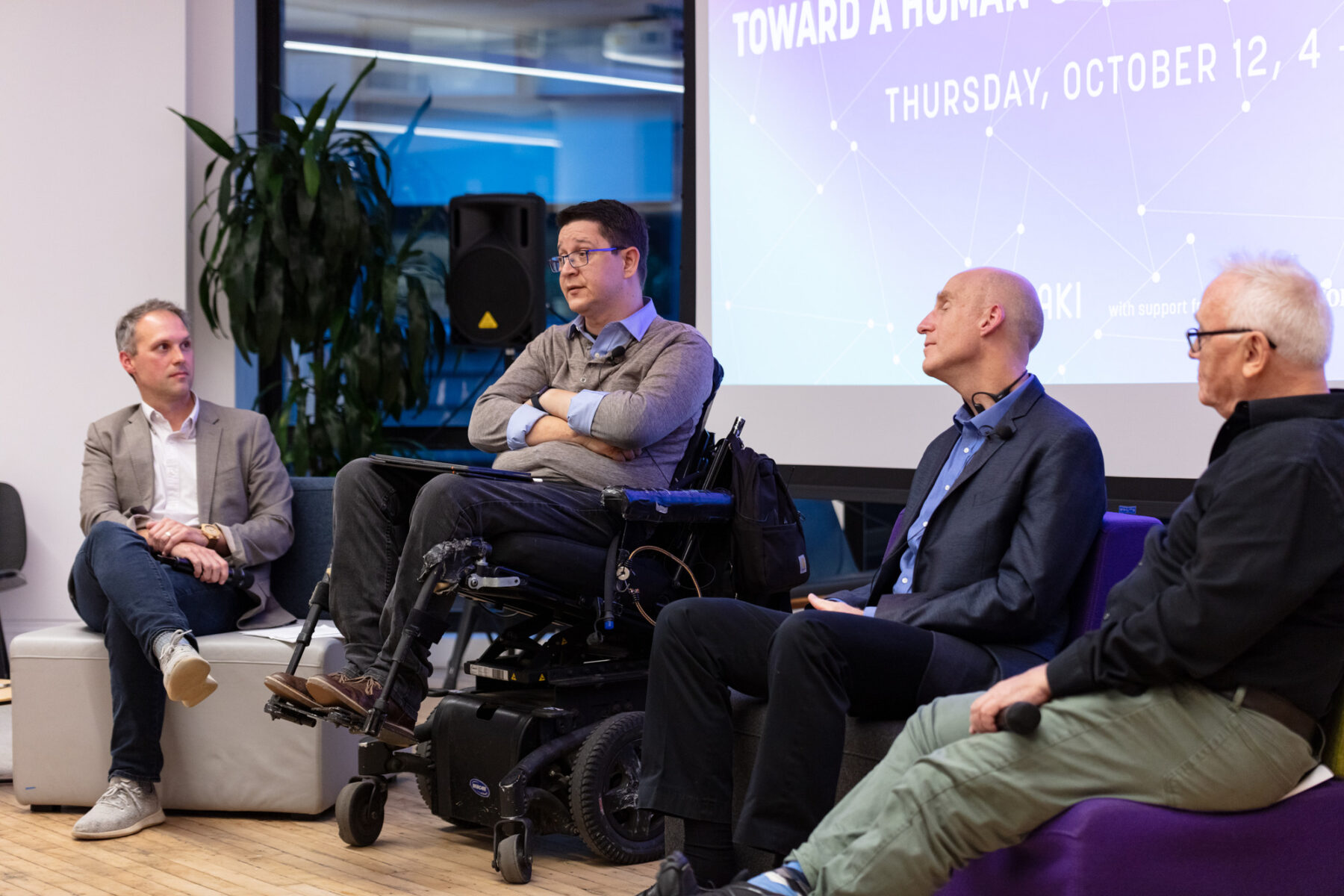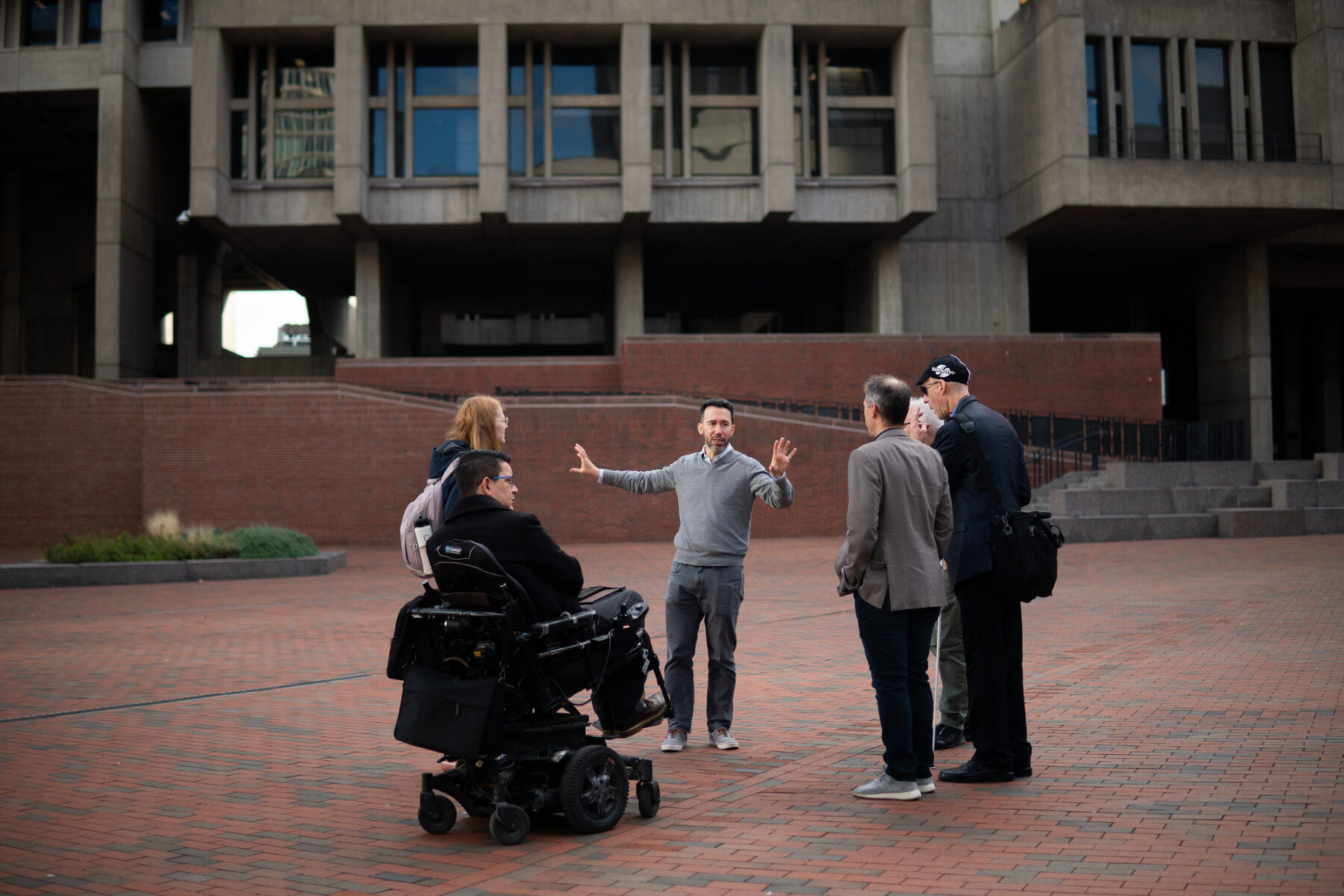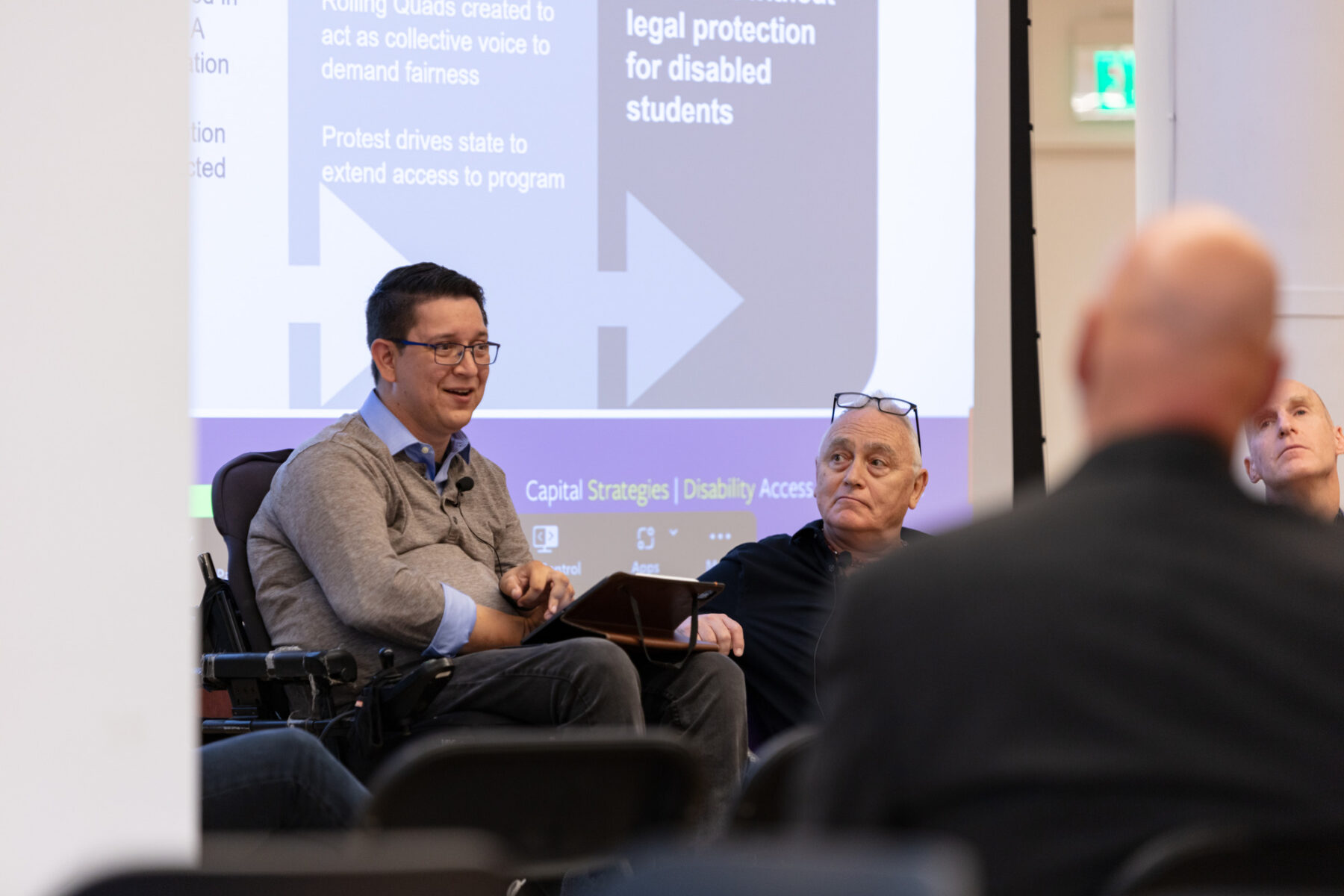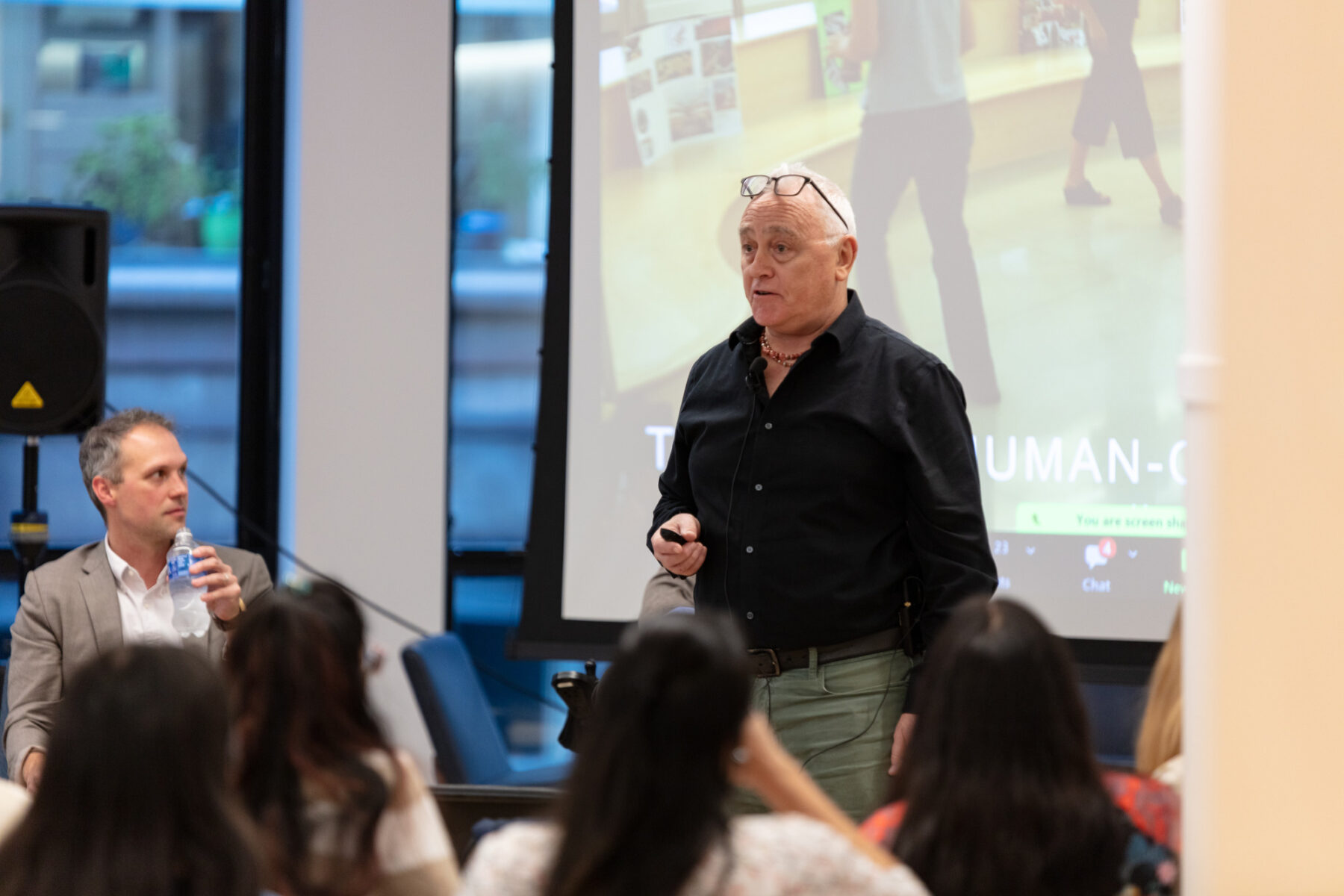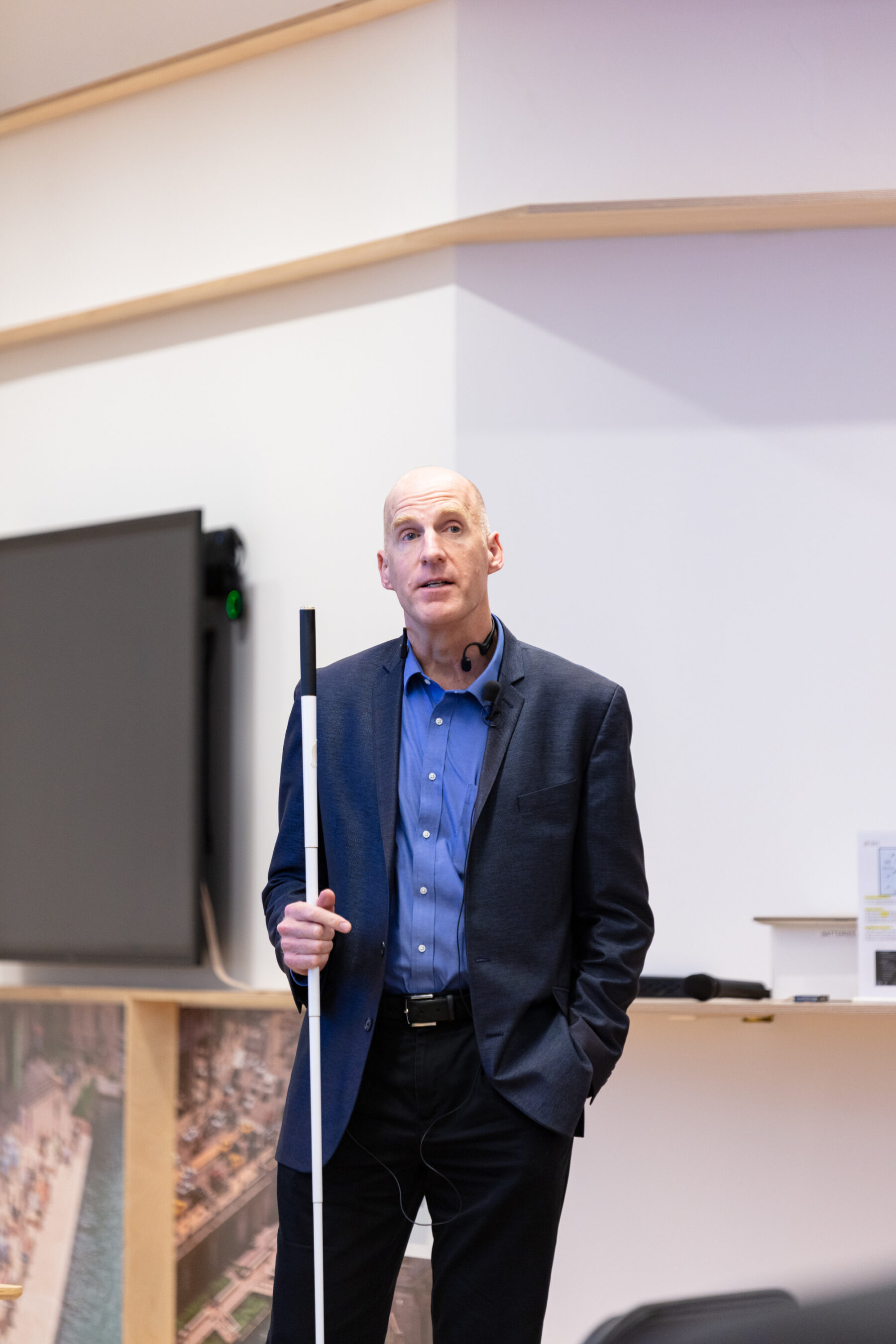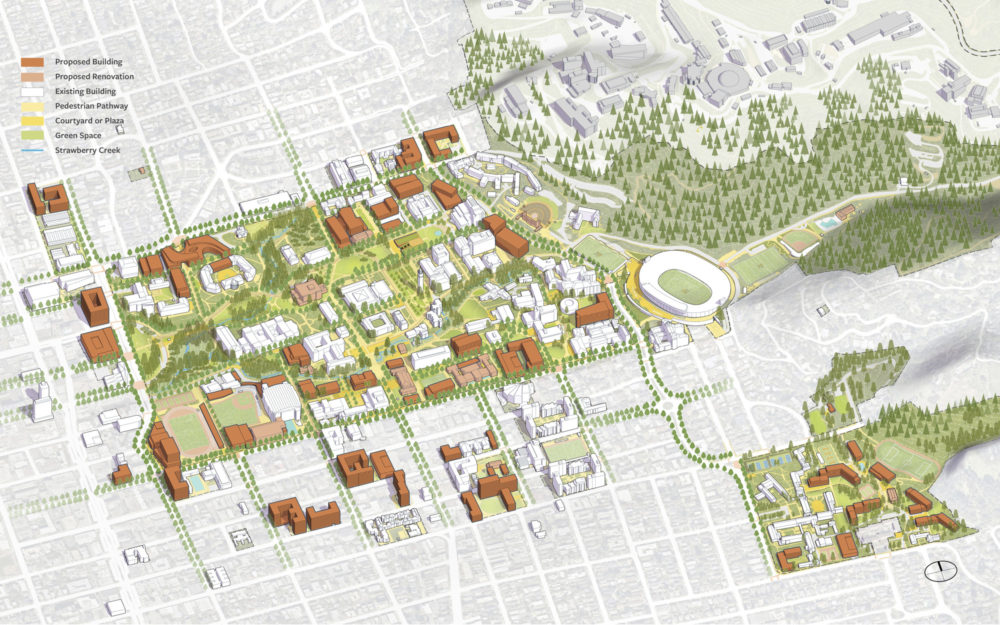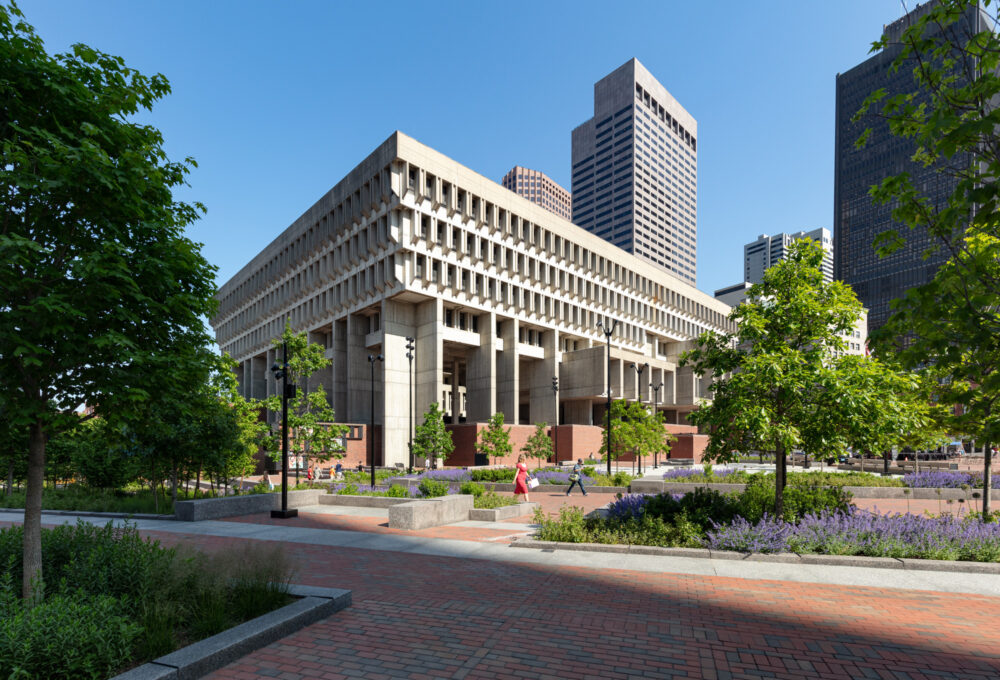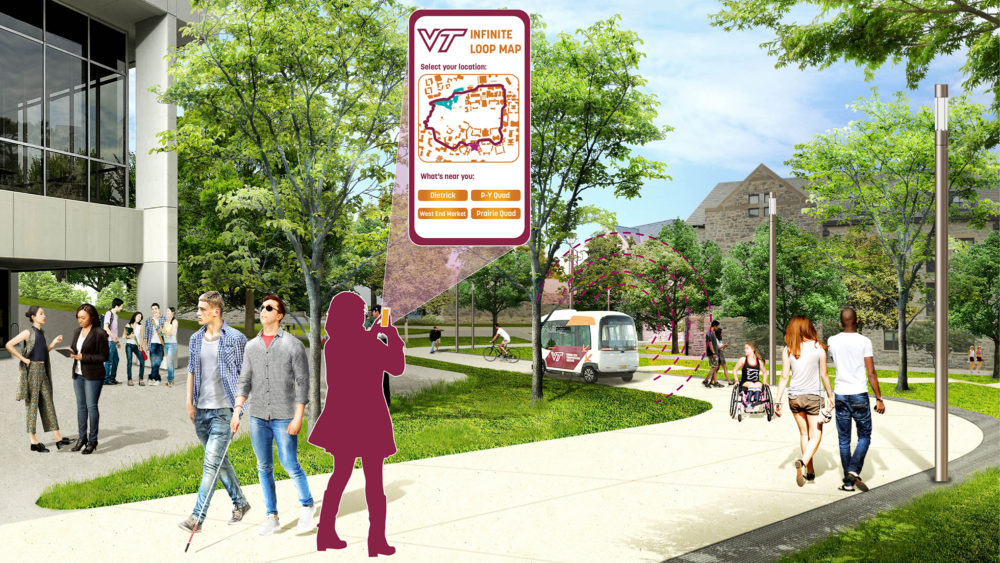On October 12, in partnership with the Sasaki Foundation, Sasaki welcomed three renowned speakers and leaders in disability rights and design to discuss human-centered design in the built environment.
Human-centered design goes beyond ADA compliance and focuses on each person’s unique experiences and sensory responses in buildings, landscapes, and cities. Sasaki was thrilled to welcome Ben Perez, UC Berkeley’s Physical Access Compliance Manager, Hansel Bauman, founding partner of HB/a+p and former Gallaudet University Campus Architect, and Chris Downey, principal at Architecture for the Blind, to explore different approaches to designing with a disability.
The day kicked off with a special tour of the newly-accessible Boston City Hall Plaza, which was followed by presentations from each speaker, a panel discussion led by Sasaki landscape architect Ian Scherling, and a reception.
During his presentation, Ben Perez delved into the history of the disability rights movement and the crucial role UC Berkeley has played in continuing to move it forward. He also described different models people have used to view and design for disabilities, explaining how these lenses and frameworks evolve throughout time and permeate our culture. He led the audience through a thought exercise.
“How many of you can do a handstand?” Perez asked. “A couple. Amazing! To those of you who can’t do a handstand, are you disabled?” He paused. “Why not? You are disabled in the context of handstands. I mean, it’s extreme because nobody expects you to be able to do a handstand. And that is what makes something a disability—it is when somebody expects you to be able to carry out an action and you violate their assumptions.”
“Disability is shaped by culture and context as much as it is ever shaped by an individual and by their inability to do something,” he said.
Hansel Bauman focused on designing within deaf culture during his presentation. As someone who is hearing, he talked about how he was profoundly impacted by his experience working at Gallaudet University, which he described as a “worldwide mecca” for deaf culture. Gallaudet University is the only higher education institution in the world that provides education to deaf and hard of hearing students in both English and American Sign Language (ASL).
“How does architecture express deaf culture?” he asked the audience. “How does it go beyond just accessibility and become something that I can identify with? ‘I feel comfortable I belong in this space.’”
Bauman walked the audience through a case study of the Gallaudet’s Hall Six Living Learning Residence, a new dormitory. The building’s public ground floor is designed to be well-lit and maintain sight lines for small group conversations as well as larger scale lectures conducted in ASL.
Chris Downey talked about architecture that goes beyond sight, and the possibilities it has opened in his practice. He described what it was like for him adapting to losing his vision after being a practicing architect for 20 years. “Effectively, I realized I went back to school,” he said.”I was learning about the built environment, the natural environment around us, through different tools, different systems, different sensory experiences, different cognitive experiences.”
“We’re all trained as designers to obsess over the environment,” he continued. “I had obsessed over the environment visually. Then it was time to turn that off and obsess over it in other ways. And that’s why I chose to stick with a cane rather than going with a seeing eye dog, because the cane is my tool to interrogate the environment around me, exploring textures, finding things, and not just being guided.”
Downey also talked about designing a new headquarters for LightHouse for the Blind and Visually Impaired, an organization that provides rehabilitation services for people that lose their sight, where Downey received most of his training after losing his sight. Downey discussed the practical aspects of the design that make it accessible for its users—50% of the organization’s staff is also blind and low vision—as well as the building’s feel, or how he “designed the handshake of a building.”
Downey also discussed how many design interventions can benefit many different kinds of users, like how in the 1980s Copenhagen installed a series of granite planks within their cobblestone streets, intending to make it easier for vendors to wheel their carts down the street. “Where do people want to walk? On the planks,” said Downey. “That’s inclusive.” Rather than separating people out, the design made it possible for everyone to use the space in the same way, together, a principle in universal design known as equitable use. Sometimes accessible design interventions end up singling people out and separating them, like installing a ramp far away from a building’s main entry point, which is accessible via stairs.
The panel discussion focused on implementing principles of universal design, how to respond to pushback that inclusive design is too costly, and using person-first language vs. disability-first language (i.e., “A person who is deaf” vs. “A deaf person.) The panelists agreed that every individual is different and has different preferences for how they want to be identified.
“Have language that you’re comfortable with, use it confidently, and if somebody corrects you, respond with humility,” advised Perez.
Watch the full conversation below.

